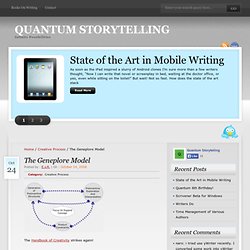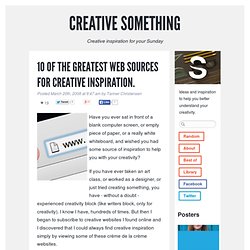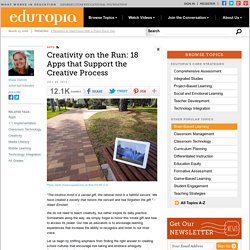

Fuel Creativity in the Classroom with Divergent Thinking. Recently, I showed a group of students in my high school art class a film called Ma Vie En Rose (My Life in Pink), about a seven-year-old boy named Ludovic who identifies as female.

Ludovic has an active imagination, but is bullied by both adults and other kids who are unnerved by his desire to wear dresses and play with dolls. The film challenged my students to broaden their understanding of gender and identity and led to a discussion about ways in which our imaginations are limited when we are forced to be who we are not. It also reminded me of other examples in which character is forced to choose an identity, such as the movie Divergent, based on the popular trilogy of novels by Veronica Roth. In Divergent, a dystopian future society has been divided into five factions based on perceived virtues. Young people are forced to choose a faction as a rite of passage to becoming an adult. Defining Divergent Thinking In the Classroom: Strategies Strategy #2: Let the Music Play. The Geneplore Model - Quantum Storytelling. Posted by : E.v.R. | On : October 24, 2006 The Handbook of Creativity strikes again!

Under the Geneplore model, creativity is broken down into two distinct phases. The first phase is the generative phase, where lots of thoughts or concepts are spawned. The second phase is the explorative or elaboration phase, where the memes generated from the first phase are expanded, explored in further depth. You may have noticed that the Geneplore model diagram refers to ideas as ‘preinventive structures.’ In the game industry we call this iteration. ChildCreativityLab. 10 of the greatest web sources for creative inspiration. Have you ever sat in front of a blank computer screen, or empty piece of paper, or a really white whiteboard, and wished you had some source of inspiration to help you with your creativity?

If you have ever taken an art class, or worked as a designer, or just tried creating something, you have - without a doubt - experienced creativity block (like writers block, only for creativity). I know I have, hundreds of times. But then I began to subscribe to creative websites I found online and I discovered that I could always find creative inspiration simply by viewing some of these crème de la crème websites. Now I’d like to share with you my list about 10 of the best web sources for creative inspiration. I strongly recommend you not only visit and bookmark each of these websites, but also subscribe to their RSS feed and check for updates often.
Test Your Creativity: 5 Classic Creative Challenges. Fascinated by how brains and creativity work, we frequently share new research on the 99U twitter feed, showing how everything from drinking alcohol, to taking vacations, to moving your eyes from side to side can make you more creative.

What’s particularly interesting, however, is that most of these studies rely on just a small group of core creativity tests – and you don’t need any special lab equipment to take them. Below, we’ve collected five of the most commonly used creativity challenges for your self-testing pleasure. While creativity “testing” is far from an exact science, trying your mettle at these challenges could yield insight into when, where, and how you’re most creative. Or maybe it’ll just be fun. 1. Developed by J.P. Hold papers togetherCufflinksEarringsImitation mini-tromboneThing you use to push that emergency restart button on your routerKeeping headphones from getting tangled upBookmark The test measures divergent thinking across four sub-categories:
Art and Science Experiments for Kids. EdgeTeachers. Can Any School Foster Pure Creativity? By Cevin Soling How do we promote creativity in schools?

This is one of the prevailing concerns of many progressive education reformers. From a long-term fiscal perspective, creativity can lead to innovation, and for the U.S. to have a competitive edge in the global economy, minds capable of identifying problems and imagining new possibilities are a necessity. At the same time, we sense that there’s something ethically wrong with suppressing creativity in children. The correlation between creativity and self-actualization seems implicit. Creativity can be broadly defined as the phenomenon of developing new processes, constructs, or ideas. The idea of teaching creativity in an environment that requires assessment, evaluation, and grading seems unlikely, if not impossible. With regards to research involving creativity and children, two recent studies are of particular note.
The most readily apparent inference to be drawn is the significant role that schools play in this reported decline. 18 Things Highly Creative People Do Differently. This list has been expanded into the new book, “Wired to Create: Unravelling the Mysteries of the Creative Mind,” by Carolyn Gregoire and Scott Barry Kaufman.
Creativity works in mysterious and often paradoxical ways. Creative thinking is a stable, defining characteristic in some personalities, but it may also change based on situation and context. Inspiration and ideas often arise seemingly out of nowhere and then fail to show up when we most need them, and creative thinking requires complex cognition yet is completely distinct from the thinking process. Neuroscience paints a complicated picture of creativity. As scientists now understand it, creativity is far more complex than the right-left brain distinction would have us think (the theory being that left brain = rational and analytical, right brain = creative and emotional). Creativity on the Run: 18 Apps that Support the Creative Process. "The intuitive mind is a sacred gift, the rational mind is a faithful servant.

We have created a society that honors the servant and has forgotten the gift. " - Albert Einstein We do not need to teach creativity, but rather inspire its daily practice. Somewhere along the way, we simply forgot to honor this innate gift and how to access its power. Our role as educators is to encourage learning experiences that increase the ability to recognize and listen to our inner voice. Let us begin by shifting emphasis from finding the right answer to creating school cultures that encourage risk-taking and embrace ambiguity.
The Idea Catcher We can start by using note-taking apps to encourage observation and reflection. Useful apps are those that encourage the recording of our thought flow and merge text with features such as voice recording, video, sketching and photography. Recommended apps: Destination Imagination.
Gaming. To Design. To Create.